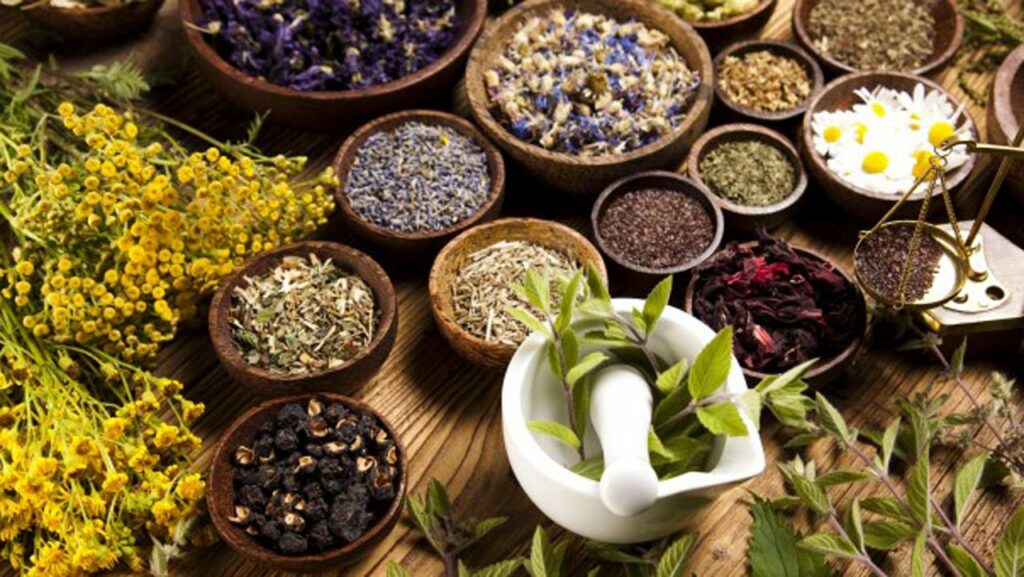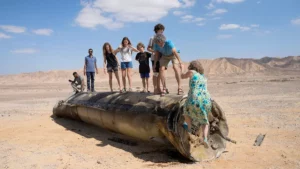India’s Traditional Medicines Can Help Africa’s Health Sector

Traditional medicine, also known as complementary and alternative medicine, is the oldest form of health care that has endured the test of time. The World Health Organization (WHO) acknowledges that nearly 80% of the world’s population uses traditional medicine in some capacity. In other words, for millions of individuals worldwide, traditional medicine serves as their first line of defence in the fight against a wide range of illnesses. And nowadays, traditional medicines complement modern medicines.
Traditional medicine has a long history in India. In fact, Indian traditional medicine is one of the oldest branches in the history of medicine. India has always played a pioneering role in spreading the knowledge of traditional medicines across the world. While Egyptians learnt about it through sea trade with India, Greeks and Romans learnt through Alexander’s invasion. Likewise, the knowledge of traditional medicine from India spread to the east with the spread of Buddhism. As India excels in this domain, it must play a more active role in its global development.
According to some studies, traditional medicine accounts for 70% of primary health care in rural India. Among others, Ayurveda is currently the most widely used form of traditional Indian medicine. Ayurveda is based on the notion that people can achieve physical, mental, and emotional healing by living in harmony with nature.
India is one of the world’s most natural resource-rich countries. India is home to 47,000 plant species, 15 agroclimatic zones, and 15,000 medicinal plants. About 7,000 of these species are used in Ayurveda, 700 in unani, 600 in siddha, and 30 in modern medicine. Recognising the importance of its bioresources, the World Conservation Monitoring Centre (WCMC) has marked India as one of the 17 mega-biodiverse countries.
On November 9, 2014, in order to promote alternative medical science, the Government of India delinked the department of AYUSH from the Ministry of health and family welfare and elevated it as a separate ministry: Ministry of unani, siddha, yoga, naturopathy, and homoeopathy (AYUSH).
As per the ministry website, the Ministry of AYUSH seeks to accomplish the following goals:
- Raise academic standards across the country for colleges and institutes teaching Indian systems of medicine and homoeopathy colleges
- Bolster existing research institutions and establish a time-bound research agenda on illnesses for whom these systems have treatment
- Design programmes for promoting, cultivating, and reinvigorating medicinal plants used in these systems and;
- Develop pharmacopeial standards for India
The Indian government first introduced the National AYUSH Mission as part of the 12th Five-Year Plan (2012 to 2017). The principal objective of the AYUSH Mission was to increase nationwide access to AYUSH services. This would be done by increasing the number of AYUSH hospitals and clinics, mainstreaming AYUSH by establishing AYUSH facilities at primary health centres, community health centres, and district hospitals, and ensuring the availability of AYUSH drugs and trained personnel.
Intending to improve the standard of AYUSH education, the Mission also aims to increase the number of modern educational facilities, preserve the accessibility of high-quality raw materials, and promote the preservation of medicinal plants. A research site has also been developed by the National Institute of Indian Medical Heritage, overseen by the Ministry of AYUSH. This online portal aims to exchange information about AYUSH systems and research updates for scholarly purposes.
Indian traditional medicine has long attracted interest from the international community as well as funding for study and development. In fact, Indian conventional medicine is regarded as world’s one of the most advanced alternative treatment method. In recognition of India’s contributions to the field, WHO has planned to open its Global Centre for Traditional Medicine in Jamnagar, Gujarat, on April 19, 2022. Beyond India, traditional medicines also have a lot of potential across the world. Currently, 170 of the 194 WHO member States, representing more than 80% of the world’s population, are using traditional medicine in some form or other. Through this centre, the Ministry of Ayush would be able to assist all these member States across the world by gathering reliable information and data on diverse traditional medical practices.
On the other part of the globe, most African countries are already well-versed in traditional medicines. The WHO recognises African traditional medicine’s significant contributions to the health and well-being of the continent. Since 2003, in recognition of its contribution to the African health system, WHO commemorates August 31 as African Traditional Medicine Day (ATMD).
Currently, more than 40 African nations have developed national traditional medicine strategies. Additionally, 30 of them have incorporated traditional medicine into their national strategies. Furthermore, 39 countries have created regulatory frameworks for traditional medicine practitioners. Traditional medicine research and development is an extremely promising field in Africa, with 34 research centres in 26 countries. If adequately promoted internationally, it also has enormous financial potential. Ghana, which has already established traditional medicine clinics in 40 regional hospitals, is one of the forerunners in this area. Similarly, the Standard Organization of Nigeria (SON) has expressed its dedication to ensuring that African Traditional Medicine (ATM) is standardised in Nigeria and beyond.
Most African member States today cultivate medicinal and aromatic plants to promote continental efforts toward equitable access to medical goods and technologies. In 14 countries, more than 100 herbal medicines have been registered with national regulatory agencies, and 19 others have facilities for the domestic manufacturing of herbal medicines. Over 45 herbal medicines are registered on the national critical medication lists across Africa.
Further, 39 countries have established legal frameworks for those practising traditional medicine. Another 25 countries now teach traditional medicine as part of their health science curricula. Training programmes have been established for both traditional health practitioners and health science students to improve the human resource base for primary health care and traditional medicine.
It has been found that many Africans go to hospitals as a last resort, as their first port of call is conventional or faith healers. And these traditional healers are well-trusted and extremely popular. Their popularity is ascribed to their thorough consideration of their patients’ socio-cultural backgrounds. Many of the traditional medicines that they use can be found in India. Therefore, India-Africa collaboration on traditional medicine will augur well for both continents, benefitting billions of people.
India may start working with Africa to develop a roadmap for AYUSH partnerships and advance health, well-being, and patient-centred health care on both continents. Given the close relations between India and many African nations, India may consider signing MoUs at the national level between the Ministry of Ayush and the health ministries of the respective countries focusing on traditional medicine.
Furthermore, India and Africa have striking similarities in climatic conditions, biodiversity, physiognomy, people, cultures, and family values. Patients commonly receive care from traditional medical systems in both India and Africa. Several existing Indian traditional medicines can benefit Africa.
India has a robust industrial base, a thriving pharmaceutical industry, and a wealth of knowledge concerning the traditional medical system. India has successfully fused the best features of wellness practice and modern medicine. Today, India has one of the most accessible, affordable, and high-quality healthcare systems in the world. According to the Ministry of Ayush, the market for alternative medicine in India stood at $18.1 billion in 2020, and it is anticipated to reach $70 billion by 2025. As both continents will benefit from active cooperation, there are ample areas for India and Africa to work together to foster the use of traditional medicine.
However, to work together more meaningfully, there is a need to develop standard operating procedures (SOPs). This would help to harmonise alternative medicines from India and African countries. A uniform regulatory framework will also be required to ensure compliance and coherence in research norms. Establishing fellowships, cross-disciplinary exchange programmes, a location for joint India-Africa conferences and/or symposia that provide training opportunities across disciplines, and scholarships are also crucial for enhancing this partnership.
When the world desperately seeks a more sustainable and inclusive future, India has a unique opportunity to set the trend.
Source : The Hindustan Times





